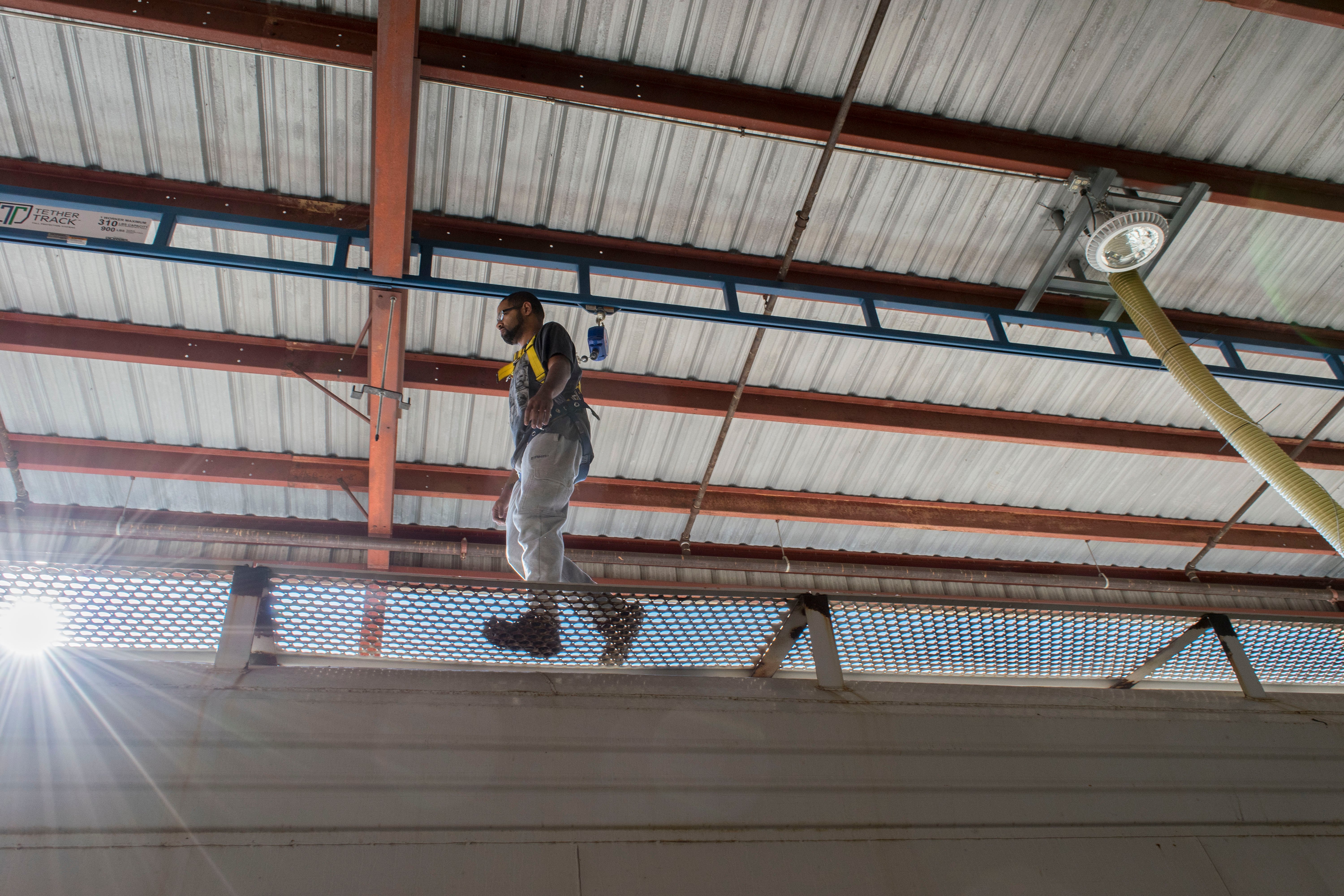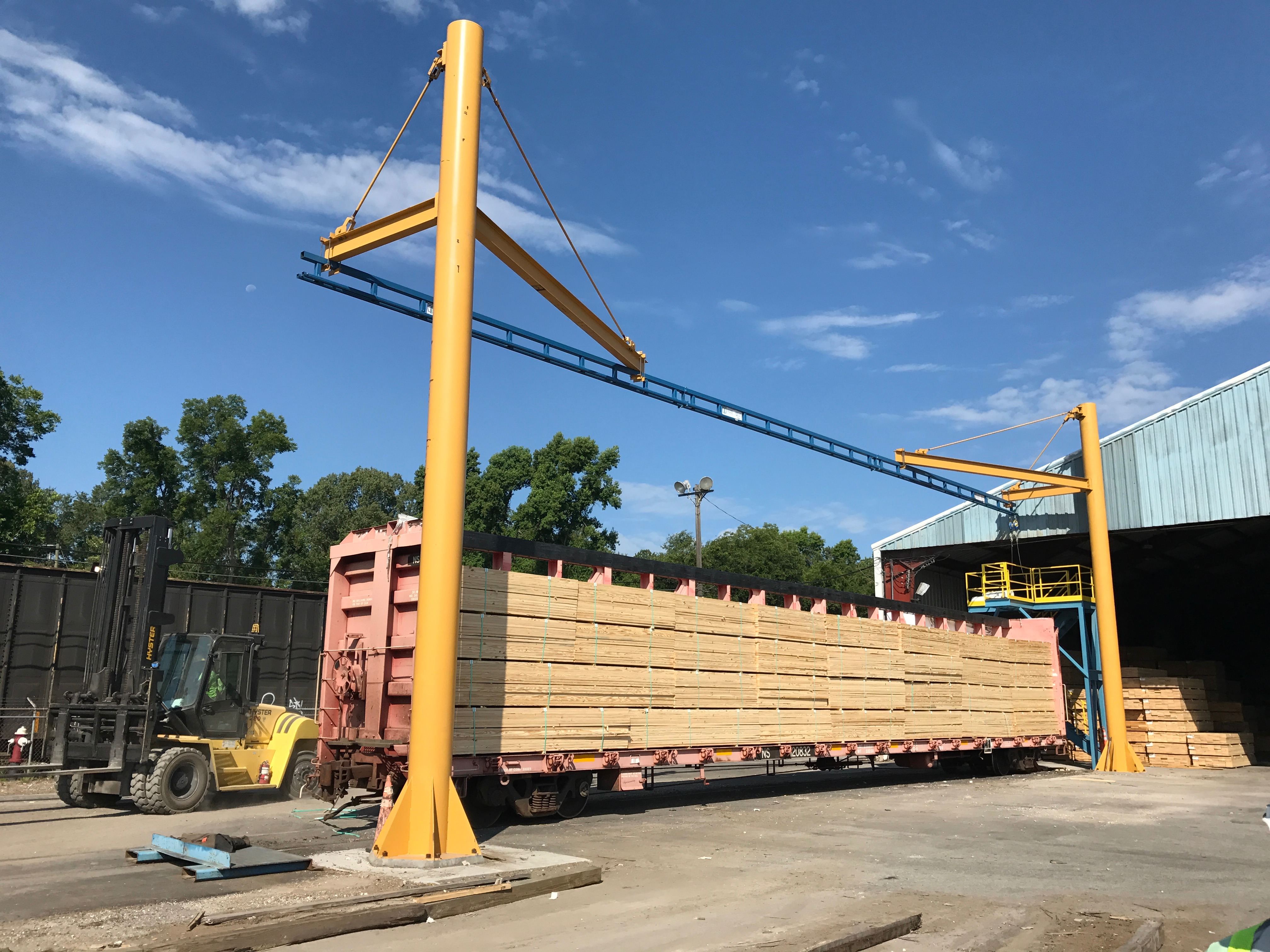Enhance your safety training
The path to effective fall protection begins with a top-notch safety training program. When properly organized, safety training will effectively engage employees and prime them for safe and productive employment. Here are some tips to help you design a safety training program that will help you in your mission to prevent falls.
- Consider using a learning management system (LMS). Supplementing your hands-on safety training with an online training platform (an LMS) is useful in multiple ways. First, an LMS enables employees to learn about safety policies using their favorite mobile device. Second, employees can master safety policies at their own pace. And third, companies save time and money on training expenses because learning can take place at any location.
- Make fall protection a point of emphasis. With OSHA citing falls as one of the most common causes of work injuries and deaths, it is paramount that employees receive in-depth training on fall protection strategies. Employees should have a strong working knowledge of the most common causes of falls and the specific measures they can take to avoid high-risk situations.
- Do not overlook seasonal and temporary employees. Seasonal and temporary employees play a key role in successful supply chain and warehouse operations - especially during the holidays. With the National Retail Federation (NRF) reporting that holiday sales represented 19% of sales produced in 2023, you need to make sure that employees receive a thorough introduction to safety and compliance procedures.
Establish a culture of safety
 "To build a thriving safety culture, companies need to focus on both the procedures and processes that guide their operations, as well as the attitudes and behaviors of every employee. It's not as simple as creating new workplace rules. It involves a new way of thinking about fatality and injury prevention."
"To build a thriving safety culture, companies need to focus on both the procedures and processes that guide their operations, as well as the attitudes and behaviors of every employee. It's not as simple as creating new workplace rules. It involves a new way of thinking about fatality and injury prevention."
- Grover Hardin, EHS Today
Mark Ward with EHS Today defines a culture of safety as the "collective values, beliefs, attitudes and norms that shape individual safety-related behaviors in an organization." Establishing a culture of safety starts with the active participation of senior management and stakeholders. Senior managers must then secure the buy-in of supervisors, who must secure a commitment to safety from front-line employees.
Identify your hot spots for falls
Once you and your employees are fully committed to optimizing safety, the next step in the fall protection process is to identify the areas in your warehouse where falls are most likely to occur. Here are some of the locations where fall risk is the highest:
- Mezzanines: A growing number of warehouses are using mezzanines to increase their storage space. Unfortunately, not all mezzanines are structurally sound and many do not feature signs that indicate the mezzanine's load capacity. As a result, mezzanines can become overcrowded and dangerous for employees who are loading and unloading materials.
- Loading docks: 25% of all warehouse injuries take place on loading docks. Many of these injuries are sustained when employees and delivery personnel fall from docks during loading and unloading, or when delivery trucks separate from the dock. Falls are even more likely when loading dock surfaces become wet or slippery due to rain or snow.
- Skylights and other holes: A growing number of facilities feature skylights to help provide natural light. OSHA considers skylights to be roof holes, which present danger to employees and visitors. Pits or holes around construction areas also present increased fall risks to employees and patrons, highlighting the need for fall protection.
Upgrade your fall protection equipment
Once you have established a culture of safety and identified the high-risk areas in your facility, it is time to focus on your fall protection equipment. By investing in robust, dependable fall protection systems, you can reduce the risk of injury in facilities with mezzanines and other elevated work platforms.

Not all manufacturers are created equal, so it is important to carefully evaluate equipment providers to ensure that the systems you purchase are both reliable and cost-effective. Fortunately, Gorbel offers ergonomic fall protection systems that are ideal for use in warehouses and other industrial settings. Here are a few of the products that can help you optimize fall protection:
- Overhead fall arrest system: Gorbel's Tether Track™ Rigid Rail Fall Arrest System offers workers mobility and flexibility while helping to prevent them from falling to lower levels. Most systems are made to accommodate multiple workers who weigh up to 310 pounds with their tools.
- Free standing systems: Gorbel's free standing monorail fall protection systems are ideal for facilities with workers who maintain, inspect, and unload flatbed trucks and tankers. You can choose from heights up to 26 feet to provide adequate protection for workers.
- Swing Arm and Fold Away systems: Gorbel’s Fold Away Systems are engineered fall protection systems that provides safety when you need it, and space when the system is not in use. Swing Arm & Fold Away Systems supply convenient overhead fall protection when extended without sacrificing productivity.
Safeguard your loading dock
 "Loading docks can be dangerous. About 25 percent of all reported warehouse injuries occur on loading docks, and for each incident hundreds of near misses occur. Causes of dock injury include truck separation from the dock and falls from the dock – particularly when a forklift backs off the platform and falls on the operator."
"Loading docks can be dangerous. About 25 percent of all reported warehouse injuries occur on loading docks, and for each incident hundreds of near misses occur. Causes of dock injury include truck separation from the dock and falls from the dock – particularly when a forklift backs off the platform and falls on the operator."
- Safety + Health Magazine
One of the best ways to prevent falls in your loading dock area is to install safety gates. Safety gates are easy to install and provide a host of safety benefits to warehouse employees. First, they provide a visual barrier that alerts drivers and employees to proceed with caution. Second, they can be used alongside a guardrail system to help protect all sides of your loading dock area. And third, they provide an extra element of protection from falls.
Cover floor openings and skylights with screens
Covering floor openings and skylights with screens or railings helps facilities comply with OSHA regulations that require "every skylight floor opening and hole" to be guarded by a skylight screen or railing. When selecting skylight screens, make sure that you carefully follow the guidelines OSHA outlines for mounting and positioning:
"Skylight screens shall be of such construction and mounting that they are capable of withstanding a load of at least 200 pounds applied perpendicularly at any one area on the screen...The construction shall be of grillwork with openings not more than 4 inches long or of slatwork with openings not more than 2 inches wide with length unrestricted."
- Occupational Health and Safety Administration 1910.21-30
Schedule internal safety inspections
An internal safety inspection accomplishes a host of goals. First, safety inspections remind employees how important it is to have fall protection measures in place. Second, safety inspections alert management to new safety challenges that may have arisen. And third, internal inspections can help prepare facilities for formal audits and inspections by OSHA and other regulatory agencies.
Safety inspections should be conducted on a quarterly basis, or as recommended by accrediting organizations. When conducted regularly, safety inspections help employees get into the habit of using the proper equipment and adhering to fall protection guidelines. OSHA outlines some key benefits of internal safety inspections:
"You will be able to prevent many hazards from occurring through scheduled and documented self-inspections. Make sure established safe work practices are being followed and those unsafe conditions or procedures are identified and corrected properly. Scheduled inspections are in addition to the everyday safety and health checks that are part of the routine duties of managers and supervisors."
- State of California Cal / OSHA Guide
What is the most secure path to fall protection?
As outlined above, there are many ways for warehouses and supply chain operators to safeguard against falls. However, the single best way to protect against falls is to contact an expert in the fall protection industry. With over 40 years of experience protecting the lives of employees, Gorbel has established itself as an international leader in the fall protection arena. The fall protection specialists with Gorbel are eager to assist you in your mission to protect your employees and look forward to assisting you.